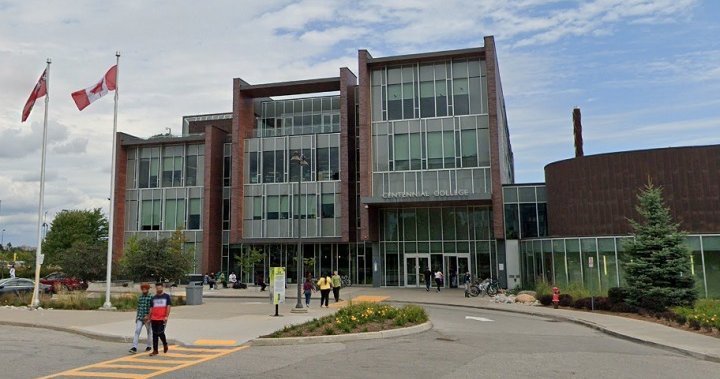The landscape of post-secondary education in Ontario is undergoing a significant transformation, driven by a confluence of factors, most notably a government-imposed cap on international student enrollment and persistent provincial funding shortfalls. These pressures have forced colleges and universities across the province to re-evaluate their financial models and implement often drastic changes, leading to program suspensions, staff reductions, and even campus closures. The ripple effects of these decisions are being felt throughout the province, impacting students, faculty, staff, and local communities.
Centennial College, located in Toronto, recently joined the growing list of institutions grappling with these challenges, announcing the suspension of 49 full-time programs slated to begin accepting new students in the summer and fall of 2025, and throughout 2026. Programs affected by this suspension encompass a diverse range of fields, including financial planning, technology foundations, journalism, and community development work. While existing students in these programs will continue to receive support until graduation, the decision underscores the difficult choices institutions are forced to make in the current climate. Centennial’s president and CEO, Craig Stephenson, acknowledged the “profound and regrettable impact” of these suspensions, particularly the unavoidable faculty and staff reductions. He emphasized the necessity of these measures to ensure the college’s long-term sustainability and its ability to continue producing graduates aligned with labor market needs. While acknowledging the gravity of the situation, Stephenson also noted that 128 full-time programs will continue to admit new students, leaving open the possibility of reinstating the suspended programs in the future.
The challenges facing Centennial are not isolated incidents. Across Ontario, numerous colleges are experiencing similar pressures, largely attributed to the cap on international student enrollment. These students, often paying significantly higher tuition fees than domestic students, have become a crucial source of revenue for many institutions. The cap, implemented almost a year ago, has resulted in a dramatic drop in admissions, nearly 50% for Ontario colleges, translating into a $752 million decline in operating spending across various campuses. This financial strain has forced institutions to make difficult decisions to maintain financial viability.
Algonquin College, for example, announced the closure of its Perth campus by the end of August 2026, a decision that will undoubtedly impact the small town of roughly 6,500 residents. The mayor of Perth, Judy Brown, expressed concern about the loss of educational opportunities in rural communities, highlighting the essential role post-secondary institutions play in these areas. Similarly, Sheridan College, one of the largest post-secondary institutions in Ontario, suspended 40 programs in November 2024. Seneca College, another major institution, has temporarily closed its Markham campus due to declining enrollment. Mohawk College has also been affected, laying off 20% of its administrative staff and suspending 16 programs for 2025.
These widespread changes paint a picture of a sector undergoing significant restructuring. Institutions are grappling with the challenge of balancing financial sustainability with their mission of providing quality education and meeting the needs of the labor market. While the provincial government acknowledges the “rebalancing” occurring within the post-secondary sector, the long-term implications of these changes remain to be seen. The decisions being made today will undoubtedly shape the future of post-secondary education in Ontario, impacting access to education, program availability, and the overall student experience.
Despite the widespread challenges, the provincial government, through a spokesperson for Colleges and Universities Minister Nolan Quinn, has expressed confidence in the resilience of public colleges and their ability to adapt to the changing landscape. The government emphasizes its focus on ensuring that post-secondary programs prepare students for rewarding careers that address current and future labor market needs. While this statement offers a degree of reassurance, the reality on the ground suggests a more complex and challenging situation. The “difficult decisions” being made by institutions highlight the need for a comprehensive and sustainable approach to funding post-secondary education in Ontario.
The current situation raises several important questions about the future of post-secondary education in Ontario. How will the government address the funding shortfalls that have contributed to these challenges? What steps will be taken to ensure access to education, particularly in rural communities? How will institutions adapt to the changing demographics of the student population? The answers to these questions will be crucial in shaping a sustainable and accessible post-secondary system that effectively prepares students for the future. The ongoing changes within the sector underscore the need for a thoughtful and strategic approach that balances fiscal responsibility with the critical role of post-secondary education in the province’s social and economic development.

